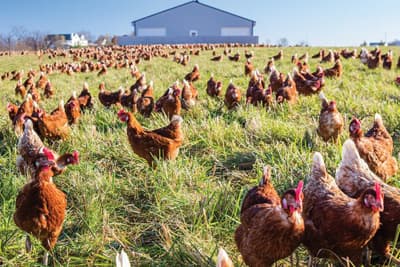How to solve the poultry manure pollution?
LIMA Fish Feed Machine,Chicken Feed Machine
The trend toward clustering of poultry production in certain preferred locations is ongoing in developed as well as developing economies. An analysis of hen populations at municipio level in Brazil, for example, shows an increasing concentration during the period 1992 to 2001 (see Figure 1). In 1992, 5 percent of the country’s total area hosted 78 percent of the chicken population, while in 2001 the same area was home to 85 percent of the population.

Intensive production can solve poultry manure pollution
Clustering is a process of geographic concentration of production units. This gives rise to groups of interconnected producers, feed mills, slaughterhouses and processing units. Clustering is driven by economies of agglomeration – the benefits that individual units obtain when they locate close to one another. Basically, the more related units clustered together, the lower the unit cost of production and the larger the market that individual units can sell into. In the livestock sector, lower production costs are achieved through competition among suppliers of inputs (e.g. feed mills, veterinary and other services), and specialization and division of labour among producers (e.g. breeding operations, fattening operations and contract farming). If a well-developed transport infrastructure supports this set-up, supply to urban and export markets is often very competitive.
Intensive production, therefore, concentrates in areas favoured by cheap inputs (particularly feed) and services, and by good market outlets for livestock products. Such conditions are found in the vicinity of cities, feed processors and large slaughterhouses, as well as harbours trading feed and animal products. The geographical location of intensive poultry activity is, thus, less and less linked to agricultural and land-use parameters. In other words, poultry production is shifting from agricultural use of the land, based on biophysical criteria (e.g. soil quality, climate, length of growing period) towards industrial use of the land.
- Receiving of feed raw materials
- Nutritional value and processing technology of corn straw
- Best feed mixture processing process
- Why do the poultry Farmers choose the Supplementary feeding strategie?
- Poultry And Livestock Farmings Affect The Environment
- Why choose the Nutrition Feed For poultry instead of traditional feedstuffs?
- Why choose extruder to produce fish feed?
- 100kg – 500kg floating fish feed line
- Small Chicken Feed Mill Plant
- Small Scale Fish Feed Pellet Line 60kg – 150kg/h
Products
- 100kg – 500kg floating fish feed line
- Small Chicken Feed Mill Plant
- Small Scale Fish Feed Pellet Line 60kg – 150kg/h
- Diesel Engine Animal Feed Machine
- Diesel Engine Dry Type Fish Feed Extruder Machine
- Wet Type Fish Feed Machine Extruder
- Dry Type Fish Feed Extruder Fish Feed Machine
- Auger screw elevator
- Ring die feed pellet making machine
- Flat die feed pellet mill



